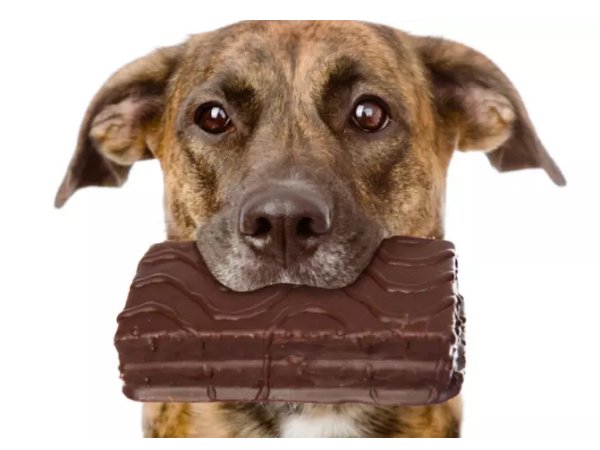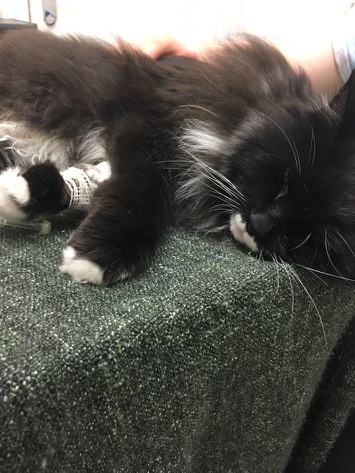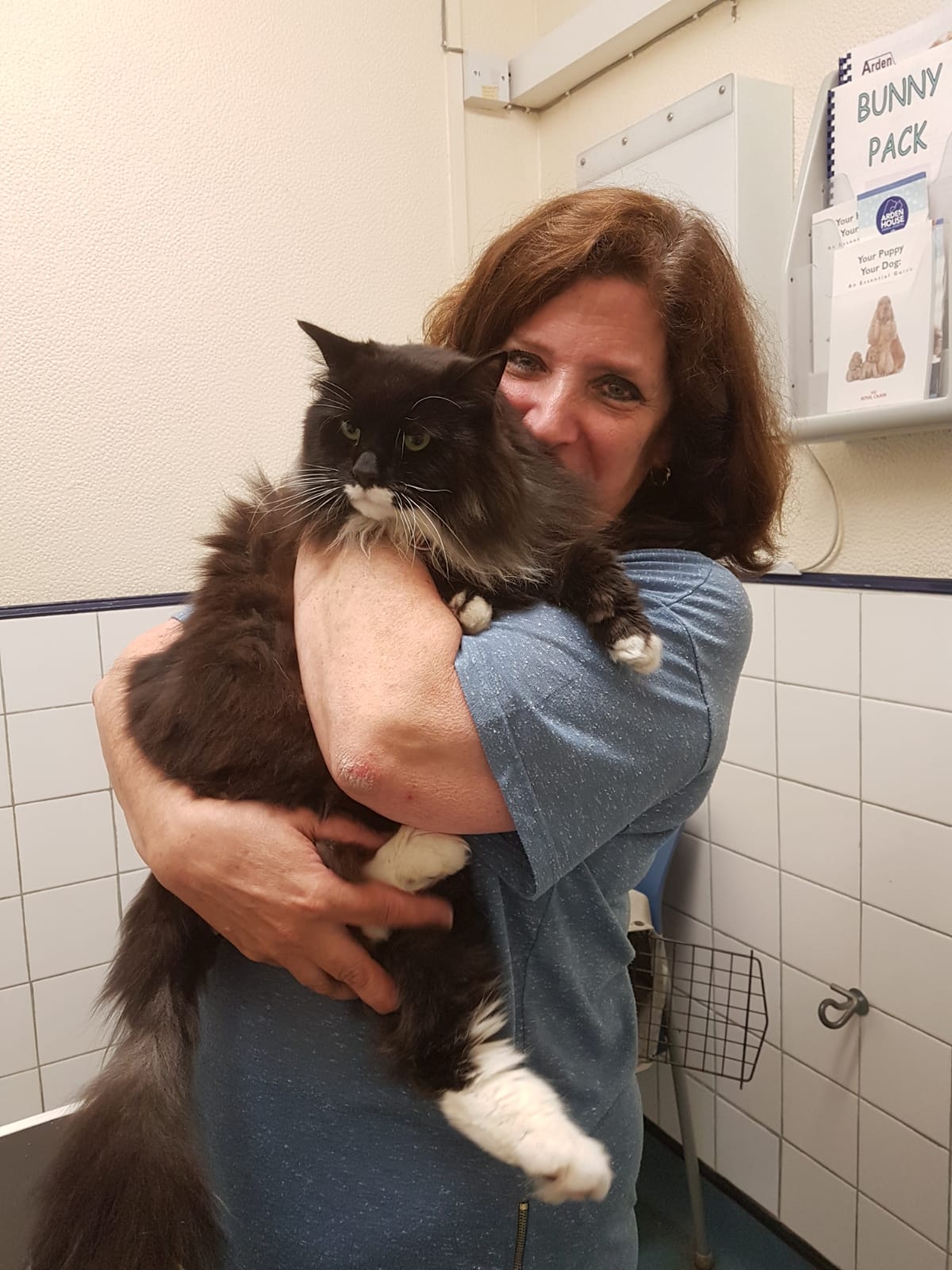
With the colder winter weather some of us will be noticing our joints are feeling more achy and the same will be true of our dogs and cats. Cool weather can leave joints especially stiff and tender, meaning an increase in discomfort for pets suffering from arthritis or even highlight that you pet is suffering from the condition.
What is it?
Osteoarthritis, or degenerative
joint disease, is the inflammation of the joints caused by wear and
tear of the cartilage and the other associated tissues. Cartilage covers and protects the ends
of the bones in a movable (synovial) joint. The cartilage has no nerves so when
it touches the cartilage of another bone, there is no pain.
When the cartilage wears away, the bone is exposed. The bone does have nerves so when the two bone ends in a joint touch each other it results in pain and inflammation – signals that arthritis is present. In degenerative joint disease we also see small bony projections (osteophytes) form on the bone that is close to the joint. This adds to the pain. This type of arthritis is progressive, meaning it continues to get worse.
What causes it?
Osteoarthritis is either age related as a result of wear and tear on the joint, or secondary to another problem
within the joint, such as hip dysplasia, a ruptured cruciate ligament or
trauma.
Signs of arthritis
Arthritis by its nature develops gradually so animals tend to learn to cope with the discomfort without showing any obvious pain. As a result some dogs and cats can appear to be very stoical about the pain from arthritis- often it is only once the pain has been treated that owners realise how much their pet was suffering.
Arthritis by its nature develops gradually so animals tend to learn to cope with the discomfort without showing any obvious pain. As a result some dogs and cats can appear to be very stoical about the pain from arthritis- often it is only once the pain has been treated that owners realise how much their pet was suffering.
Signs of arthritis in dogs include;
🐶Sitting down on walks.
🐶Slowing down on walks
🐶Stiffness, especially getting up after rest
🐶Reduced activity
🐶Hesitancy to climb steps
🐶Difficulty jumping into the car
🐶Slowing down on walks
🐶Stiffness, especially getting up after rest
🐶Reduced activity
🐶Hesitancy to climb steps
🐶Difficulty jumping into the car
🐶Change in character (restless, anxious withdrawn, clingy, grumpiness)
🐶Limping
🐶Quiet - spending less time playing with family; which can be mistaken for a sign of 'aging'
🐶Limping
🐶Quiet - spending less time playing with family; which can be mistaken for a sign of 'aging'
🐶Excessively licking over a joint
🐶 Swollen joints
🐶Painful joints Signs of arthritis in cats include;
 |
🙀Reluctance to play and exercise
🙀 Lose ability to jump up to, or down from heights.
🙀Sleeping more
🙀No longer grooming themselves
🙀 Irritable/grumpy when stroke
🙀 Lose ability to jump up to, or down from heights.
🙀Sleeping more
🙀No longer grooming themselves
🙀 Irritable/grumpy when stroke
🙀 Grumpiness
🙀 Crying when picked up
🙀Difficulty stepping into litter tray
🙀Difficulty stepping through the cat flap
🙀Difficulty stepping into litter tray
🙀Difficulty stepping through the cat flap
We recommend a visit to see one of our vets if any of these signs (or other changes) are noticed in your pet.
How is arthritis diagnosed?
Your vet may suspect that your pet has
arthritis from the signs you describe and by performing a thorough health
check. The vet will manipulate the joints gently to check for swellings, heat,
evidence of pain, range of movement and crepitus (a grating feeling when the
joint is manipulated). Sometimes it is necessary to take an x-ray to find out
what is going on in the joints. This usually requires a sedation or general
anaesthesia and a separate day appointment is arranged for this.
How is osteoarthritis treated?
The goal of treatment is to decrease
pain, minimise lameness, improve mobility and provide a good quality of life
for affected patients. Arthritis cannot be cured.
Weight control: Dogs and cats that suffer from chronic
pain caused by conditions like osteoarthritis often become inactive, which can
result in obesity. Controlling your pet’s weight will lighten the load on
arthritic joints and make it easier for them to move around. We appreciate that
reducing the weight of an animal that finds exercise painful is not easy.
Please speak to a member of staff about our weight clinics which are run free
of charge. We will be happy to give ideas regarding diet, weight targets and
design exercise strategies to suit your pet, as well as providing help and
support whenever required.
Exercise is essential because it contributes to
strengthening the muscles that support joints. Moderate amounts of low-impact
exercise each day will improve joint mobility and can help get a lethargic,
arthritic pet active again. Dogs will benefit from such activities as walking
and swimming (hydrotherapy) ; cats can profit from play that keeps them moving without
excessive jumping. Consult your veterinary surgeon about what amount and type
of exercise would be best for your pet. Also, be aware that your dog or cat’s
arthritis pain may be more severe at certain times than others. If this is the
case, let your pet take a break from his or her exercise routine for a few
days, until the painful flare-up subsides.
Medications known as non steroidal
anti-inflammatory drugs, (NSAID), are often prescribed to reduce the pain and
inflammation associated with arthritis. Their efficacy is well documented. Any
reduction in pain at the lowest possible dose will allow for an improved
quality of life and limit any possible unwanted side effects. Before use, your
pet will be assessed for their general health and regularly monitored whilst on
any medication. Please ask your veterinary surgeon for more information. Please
note: It is NOT safe to give your pet human anti-inflammatory
(NSAID) medicines.
Diet and Nutraceuticals.
There are particular diets such as the Royal
Canin Mobility that can really improve the signs of arthritis. It
contains both nutrients that help with the inflammation, including
anti-oxidants, and helps with weight management. Do speak to your vet.
Joint supplements (nutraceuticals) are also found to be very good in some
cases. These nutritional supplements are especially useful in the early stages
of the disease or when recovering from a joint trauma (including surgery). They
can be used solely as a preventative measure too. These supplements often
include ingredients such as glucosamine and chondroitin that are useful in
supporting the health of the cartilage and surrounding structures.
The regulation of such supplements is
limited and as such the quality may vary greatly from one manufacturer to
another. One should always use those recommended by your vet.
Making a few adjustments to your pet’s
environment can help to keep them more comfortable and mobile. A few
suggestions are;


- Make sure that you provide a well padded cosy bed, out of draughts. Ensure that it can be readily accessed.
- Allow your cat to reach their favourite places easily by placing a box or item of furniture as a launch pad.
- Make sure that your cat can reach their litter tray easily and check that the sides aren't too tall; that they are able to step into it comfortably.
- Reduce the need for your pet to have to climb the stairs.
- Allow easy access to food and water without the need for your cat to jump up.
- If your dog appears unsteady when out walking or has difficulty on uneven surfaces, a harness may offer them additional support by distributing any pressure from the lead over a larger area. This means that you may be able to assist them in keeping their balance making it easier for them to walk on uneven surfaces or going up or down stairs.
- If you have laminate, wood or vinyl flooring that your dog is slipping or sliding on, you could consider the use of rubber backed mats, particularly where your dog would lie down, turn or stand to eat, to help them grip the floor.
- If your dog is having difficulty reaching their bowls on the floor, you could consider raising the bowls a little off the floor or there are a variety of raised bowls on the market, to find a more comfortable height for them to eat and drink at.
- Consider a ramp to aid your dog getting into and out of the car.
Your pet's well-being
Spend some time cleaning and grooming your pet. Check their claws to see that they aren't becoming overgrown. Encourage play and interaction to provide exercise and mental stimulation.
Have regular check up's; it's important to maintain communication with your vet to ensure that your pet is enjoying their senior years.
Consider alternative therapies
Hydrotherapy (which involves your dog swimming in a purpose-built pool) helps to build muscle mass to better support joints. Swimming is low impact and so tends to be more comfortable for dogs with stiff joints. Other therapies, such as acupuncture, could be considered.
Your vet will be able to discuss which therapies will be most appropriate for your pet and where you will be able to find them locally.
In conclusion;
Once arthritis has started, it cannot be cured, but if we notice the signs early and manage it carefully, we can slow down the progression of the disease, greatly reduce the symptoms and so improve your pet's quality of life.
Disclaimer:
The contents of the Arden House Animal Hospital























